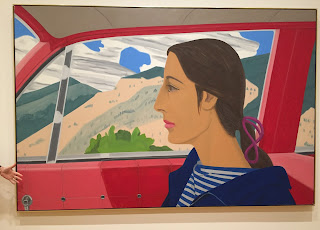A Road Trip is not at all like a trip on the road, though both naturally involve driving a car. In the usual setting, one drives to get to a destination, counting the miles, hoping it does not take too much time, limiting the stops and wondering when one will arrive.
When we take off on a road trip, we feel the spirit of adventure. We look forward to many stops, some planned and some spontaneous. We hope not to get to our final destination too soon because that will end the wandering and the exploring -- the freedom of the road. We mention our general route to friends and family ahead of time and are open to suggestions so we can learn what we must not miss. Has anyone heard of the Bellingrath Home and Gardens? Well, a spontaneous tip led us to this beautiful spot just west of Mobile. Traveling free form, we come equipped with maps, guidebooks, and a readiness to consult www.tripadvisor to find the things to do or places to eat in Mobile, Little Rock or Bentonville, or wherever we are.
The purpose of our trip is to explore the secondary and even tertiary places in our great land, places that might well be overlooked. Unexpectedly, we can find ourselves in Eureka Springs guided there by a local women in the AAA office in Bentonville or as we approach Dayton OH we recall David McCullough’s Wright Brothers and decide to visit their bicycle shop. It whets our appetite for the next road trip, maybe with a visit to Kill Devil Hills. And we always discover that every stop is fascinating.
As we go along on this voyage of discovery, we feel compelled to record what we’ve seen so we can share it with others and can remember the trip. And how handy that now this can all be done with a blog.
On one of our first road trips – driving across the country from Maryland to Hood River, Oregon – our very first stop was in Rochester, NY at George Eastman’s Home now the Kodak Museum. Here we saw the revolution that the box camera created, allowing each tourist to capture his/her very own images. One cannot imagine the American road trip without the indispensable and ubiquitous camera. We can write our impressions, but how wonderful that we can enhance these memories with photos taken along the way. Now that the Smartphone and the camera have merged, everyone has the chance to be a skilled or at least a devoted photographer. Nothing wrong with the spontaneous, even out of focus, momentary snapshot to bring back memories of the open road.
And so our May 2016 trip
 |
| Longboat Key |
 |
| Chevy Impala by Alex Katz |
 |
| Passing the Arch in St. Louis |
 |
| Driving Along |
 |
| Crossing the Hudson in the Adirondacks |
 |
| T1 = 900.3 + 2,000 Miles |











































